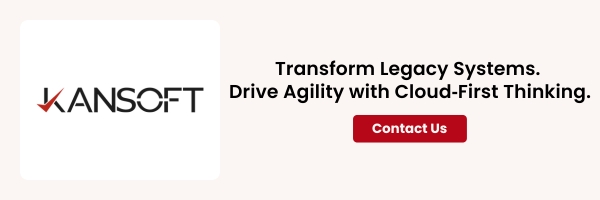As enterprises accelerate digital transformation, having a clear cloud adoption strategy supported by cloud migration services is critical for success. A structured journey begins with a thorough cloud readiness assessment, followed by targeted legacy application modernization. With the right cloud adoption framework, businesses can confidently transition to scalable, secure cloud-native infrastructure.
As organizations race toward digital transformation, adopting a cloud-first strategy has become essential. But it’s more than just lifting and shifting infrastructure—true agility begins with a clear roadmap.
In this blog, we’ll break down the key stages involved in moving from legacy systems to modern, cloud-native operations. From cloud readiness assessments to legacy application modernization, we’ll walk through every crucial step.
Why a Cloud-First Strategy Matters
A cloud-first approach ensures that all future applications and workloads are built and deployed in cloud environments by default. For enterprises, this means:
- Greater scalability
- Faster time-to-market
- Lower infrastructure costs
- Stronger disaster recovery
- Real-time access to data
But achieving these benefits requires the right cloud adoption strategy—and a clear path forward.
Step 1: Cloud Readiness Assessment for Migration Success
Before transitioning to the cloud, conducting a thorough cloud readiness assessment is essential. This process helps you evaluate:
- Legacy systems and technical debt
- Application dependencies and complexity
- Data compliance and privacy concerns
- Potential risks and ROI opportunities
At Kansoft, we begin every engagement by conducting a detailed readiness audit to ensure clients are set up for long-term success.
Step 2: Build Your Cloud Adoption Framework
An effective cloud adoption framework bridges business objectives with IT capabilities, offering a structured approach that encompasses:
- Governance models
- Security policies and compliance checklists
- Roles and responsibilities
- Resource planning
- Migration timelines and KPIs
No matter if you’re using AWS, Azure, or GCP, a customized framework ensures a seamless transition and better coordination across teams.
Step 3: Execute Legacy Application Modernization
Most enterprises still depend on legacy systems. Legacy application modernization involves upgrading, re-platforming, or replacing outdated systems to ensure compatibility with cloud environments. Common strategies include:
- Rehosting (lift-and-shift)
- Refactoring (code-level adjustments)
- Replatforming (upgrading runtime platforms)
- Replacing (with cloud-native apps)
Modernizing your stack makes it easier to adopt microservices, containers, and scalable architectures that support agility.
Step 4: Accelerate with Cloud Migration Services
Cloud migration services guided by experts streamline and speed up the transition to the cloud. At Kansoft, we help clients with:
- Application mapping and dependency analysis
- Automated migration tools
- Data and workload migration
- Testing, validation, and deployment
- Post-migration monitoring and support
The right partner minimizes downtime, ensures cost control, and handles migration at scale.
Step 5: Align with Long-Term Cloud Adoption Strategy
Once in the cloud, long-term success depends on applying cloud transformation best practices, such as:
- Security-first architecture with zero-trust models
- Performance optimization through observability tools
- Cost management using intelligent resource allocation
- DevOps and automation for continuous integration
- Change management and user training programs
At Kansoft, we believe transformation is not just about tech—it’s about empowering your people and processes.
Step 6: Measure, Refine, Repeat
Post-migration, your cloud strategy must be continually optimized. Use KPIs like:
- Infrastructure cost reduction
- Application uptime and performance
- Deployment velocity
- User adoption and feedback
Frequent reviews and cloud governance help ensure agility without sacrificing control or compliance.
Final Thoughts
Adopting a cloud-first strategy is a significant but necessary shift for enterprises aiming to stay competitive and agile. From cloud readiness assessments to modernization and cloud adoption frameworks, each step builds a stronger digital foundation.
With Kansoft’s proven approach to cloud migration services and transformation best practices, businesses can unlock the full potential of the cloud—securely and efficiently.



